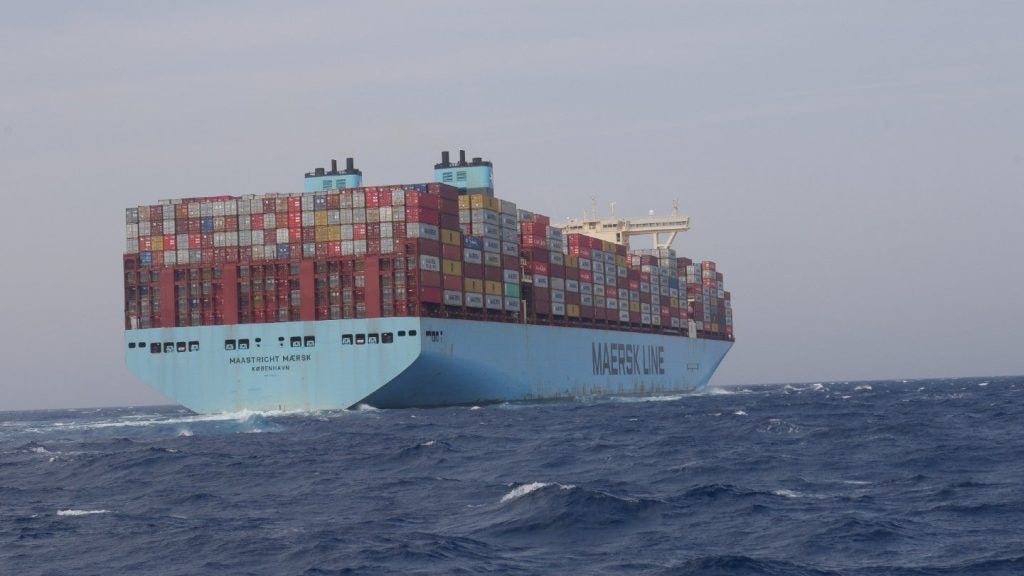
The Balkan state of Croatia has had a tough 2016, with political upheaval and slow growth in its national economy, but is forecast a stronger 2017 thanks in part to its leasing industry. Brian Cantwell reports.
As years in politics go, 2016 was a volatile one for Croatia. The country endured three separate government administrations during the year; the second in June when the Croatian Parliament voted to dissolve itself, ending a coalition government led by Tihomir Oreskovic that had been in power for only six months.
Andrej Plenković, who has been Croatia’s prime minister since October 2016, has a tough challenge to start growing the national economy. According to a 2014 report by the Institute of Economics, Zagreb, 27 years ago the country was the third-wealthiest of the former-communist Balkan states, behind the Czech Republic and Slovenia. Since then, of the Eastern European countries to have joined the EU, Croatia is the second-poorest.
The country has a high debt ratio: Moody’s expects its debt burden to increase to 90% of GDP by 2018; the country’s entry to the EU in 2013 only recently unlocked sources of capital for lending.
Economic growth in Croatia has been less good than that of its EU neighbours; additionally, the Croatian Bureau of Statistics put unemployment at between 13.1% and 17.9% of the population in 2016, although much work is seasonal, with Croatia becoming a tourism hotspot in the summer.
“We have been exposed to long-term crises, but last year has shown some positive macroeconomic ratios which gave us hope that market started to recover,” says Kresimir Perić, chief executive officer at Raiffeisen Leasing Croatia.
“Uncertainty, regarding political elections and establishment of the new government also influenced the business environment.”
How well do you really know your competitors?
Access the most comprehensive Company Profiles on the market, powered by GlobalData. Save hours of research. Gain competitive edge.

Thank you!
Your download email will arrive shortly
Not ready to buy yet? Download a free sample
We are confident about the unique quality of our Company Profiles. However, we want you to make the most beneficial decision for your business, so we offer a free sample that you can download by submitting the below form
By GlobalDataBut things are beginning to change, says Perić. “The newly established government, together with a combination of positive macroeconomic ratios and indication of reforms that must be conducted, lead to the fact that clients can make a decision more easily on investment, even from a psychological point of view.
“Leasing depends on GDP growth, consumer standard, investments and other indicators, which reflect on clients’ needs for the purchase of different machines, equipment and vehicles which can be used in daily business or for future development.
“By the recent appointment of the new government and some messages that it gave, the business community is hoping the government will ensure a clear and proper environment for business activity,” says Perić.
“This is backed by a recent stable outlook given by ratings agencies, and a GDP forecast by the European Commission of a 3.1% increase in 2017.”
Leasing industry setup
European Bank of Reconstruction and Development Croatia principal banker Ivana Milicic says that the largest leasing companies are owned by banking groups, banks are dominant in funding for leasing businesses in Croatia, with 90% of all funding either parent funding or independent finance businesses.
“They have not issued bonds or entered into any syndication market to get funding,” says Milicic. “They are trying to balance their lease lengths against their asset liabilities, as given to them from their banking groups. The majority of leases written are via secured lending,” she says.
Perić agrees, saying the market consists of bank-owned and privately owned owners. Perić explains that it is important for banks to have leasing companies within their portfolios because there is additional value for their customers.
“Croatian legislation says that financial leasing can be written within the bank –besides leasing companies – but operational leases must be written only within special leasing companies,” says Perić.
“Unless something changes in the legislation, the model will remain as it is.
“Regarding our strategy for growth, having a bank as an owner is always a very supportive relationship.”
Credit crunch hangover
Milicic says there has been a longer credit-crunch hangover in Croatia than in other EU countries.
“The effect of the crisis in Croatia was delayed slightly,” Milicic tells Leasing Life. “It was almost a year after Europe that it really took hold here, and it went on longer than expected.
“It was, at the same time, linked to entering the EU, and in the mind-set of the companies that were looking for the sources of attractive funding terms and conditions and looking to the EU for capital grant funds. 2017 is the first year that we are actually flooded with liquidity and availability of EU funds,” notes Milicic.
“I would expect that this would result in significant investment in leasing and financial products, and be used much more,” she says.
The government plays a significant role in the development and functioning of the leasing market in Croatia, mostly through guarantee programmes by Hamag-Bicro, the Croatian Agency for SMEs and Investment, and the HBOR, the Croatian Bank for Reconstruction and Development, through funding sources.
There are 19 leasing businesses currently in the market, all regulated by the Croatian Financial Services Supervisor, Hanfa; the figure is down from 21 a few years ago as a result of growing competition in the market of bank-backed lessors in Croatia.
In 2013 Hypo Alpe-Adrea-Leasing, previously part of the Austrian Hypo Group that was bailed out by the Austrian government for €900m, was sold off as part of Hypo’s wind-down plan. The new owner, Addiko Bank, exited the leasing market due to rising competition and shrinking margins.
“The financial instruments and funding sources in question are mostly intended for micro and SME companies in the segments of production, export and innovation in the economy,” says Vladimir Kristijan, member of the management board at Erste & Steiermärkische S-Leasing. “As far as leasing objects are concerned, the aforementioned programmes mostly support the financing of equipment and commercial vehicles.”
Financial leasing, which accounts for 75% of leasing of all types of leasing object, and operating leasing, which is most often used by legal entities to finance personal vehicles for the purposes of tax optimisation of the costs of company car use, are the most popular products in Croatia, explains Kristijan.
“Leasing operations in the city of Zagreb and its surroundings account for approximately 50% of the total financing volume” Kristijan adds.
“The rest pertains to the other Croatian cities – mostly to Split, Rijeka, Osijek, Pula, Varaždin, Zadar and Dubrovnik. We could say that this is in line with the dynamic of economic activity in Croatia.”
Perić explains that Raiffeisen sees a continued progression in the asset classes already covered by lessors in the region.
“In the future we expect that cars, trucks, boats and mobile houses will continue to rise; equipment depends on investment appetites, and real estate will be financed only on a case-by-case basis.
“Depending on the leasing object and preferences of clients, financing will continue to be either financial or operational leasing,” says Perić.
“Based on available data for the first half of 2016 [from Hanfa], leasing of passenger cars, trucks, boats and mobile houses are rising as a result of seasonal activity and touristic needs – mainly rent-a-car business, boats for charter and mobile houses placed on the coast.
“Equipment is stable, while real estate portfolio is decreasing due to the fact that many non-performing loans are related to real estate financing in the past,” Perić says.
Factoring boom
Milicic says the SME sector was very badly hit in Croatia during the recession, leading to a small growth in leasing, but conversely seeing a boom in factoring, which required its own management from authorities and regulators to control.
“The SME leasing sector was hit by the credit crisis the most, which can be seen absolutely in several aspects in Croatia, concerning liquidity and prolonged payments to SME clients, which occurred at the same moment as the boom in the factoring industry,” she says.
“The leasing segment declined, while factoring returned double-digit growth, and rather facilitative legal framework for the development of factoring services was necessary. The factoring law was promulgated in August 2014.”
Leasing Life understands that the factoring law allows the lender legal recourse to take money back from the SME should an invoice payable to the SME not be paid.
“The Factoring Law was prepared to increase efficiency and decrease the legal uncertainty of factoring,” says Milicic.
These included the treatment of recourse factoring in case of insolvency of the assignor (sale or secured transaction), the effect of a ban on assignment clauses on factoring (usually inserted in sale agreements by large buyers), clear and unambiguous rules for assigning future receivables (almost a necessary component of long term factoring relationships), alignment of terminology used for various factoring products (transparency and increased visibility for the market), providing clear and certain rules regulating liabilities in non-recourse factoring, distinguishing factoring from collection and non-performing loan management.
Milicic adds that because of the way that leasing has stimulated the economy in the past, it continues to have an important role in the national economy.
“Given the regulatory requirements from before the crisis, the Croatian banking sector was limited as of 2003 by the requirements of the Croatian central bank to 12% per annum growth in relation to [the parent bank’s] assets. The leasing sector started booming,” says Milicic.
And because of the increase in demand, leasing as an alternative grew up, sprouting parent-backed leasing companies.
“Everything which could have been transferred – like car loans that were in the banks’ portfolios – was transferred to the leasing business; leasing as an alternative started,” says Milicic.
To the future
Asked what challenges stood in the path for the Croatian leasing market, the representatives from Raiffeisen Leasing and Erste Leasing are largely positive about the possibilities, but are realistic at the same time.
Erste Leasing’s Kristijan says: “Our main challenge in the upcoming period will be sustainable growth of the leasing market in all segments, which should be supported by growth of economic activity, export, investments and employment, which has an indirect effect on trends in the leasing market.
“Also, the emphasis is on the development of new products and services, greater reliance on asset quality, and digitalisation of operations, which should make leasing an even more attractive product for clients.”
Raiffeisen’s Perić sees regulatory and legal requirements as a challenge, and believes market consolidation could be on the horizon.
“Leasing companies need to fulfil all legal and regulatory requirements, which requires a lot of engagement,” says Perić.
“As there are many companies on the market, it is expected, at least in the mid term, that some of the companies will decide to leave the market or there will be some mergers. On the other hand, strong competition will bring market pressure on margins.
“Although leasing has some advantages to the SME, banks are seen as competition to their client, because of their huge liquidity and necessity to place funds, so pricing pressure will come also from that side.”
Milicic predicts growth for both the leasing sector and the national economy this year.
“I would expect the growth of the leasing sector to be in line with GDP growth,” she says.
“Going forward, leasing businesses will maybe have more transactions with smaller tickets; it will definitely be linked to investments with EU funds,” she adds.
“Agriculture and energy-efficiency tenders have just been launched, so I would expect new business for leasing with machinery to rise, and equipment financing to be back. It’s a positive outlook for 2017.
“In particular, Croatian equipment finance – because it is a nautical country – is linked to tourism, so it is short-term rental cars, on very short leases of three or six months. We had 16m tourist arrivals in 2016, an 8.7% increase on 2015, with foreign tourists higher at 8.9%,” says Milicic.
“There is a legal framework that links the industry together, with the tax implications like we had in the past with the self-introduction of new fiscal duties, which had a very strong impact on new leases for vessels, which applies to the motor segment too.
“Going forward, leasing is a reflection of economic growth, with yacht rentals for business playing a key part of the picture.”







